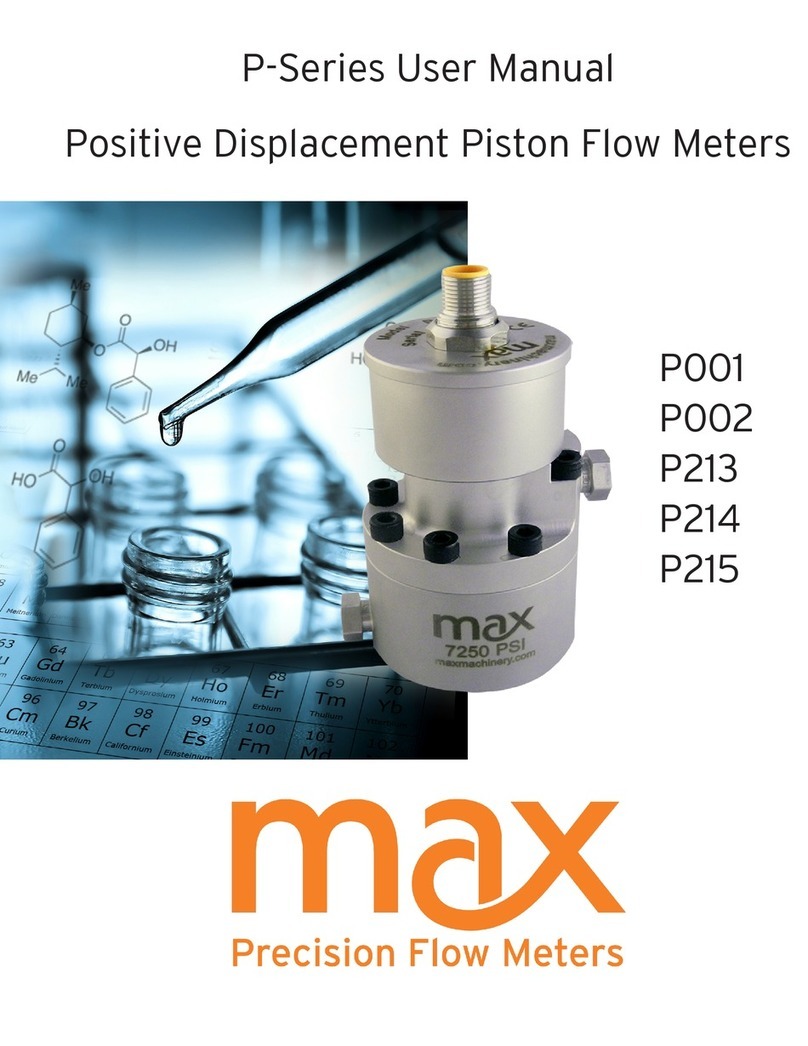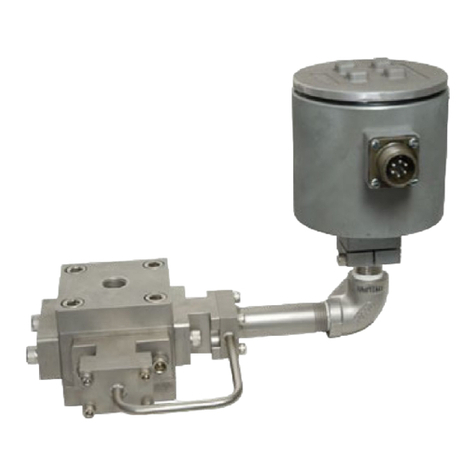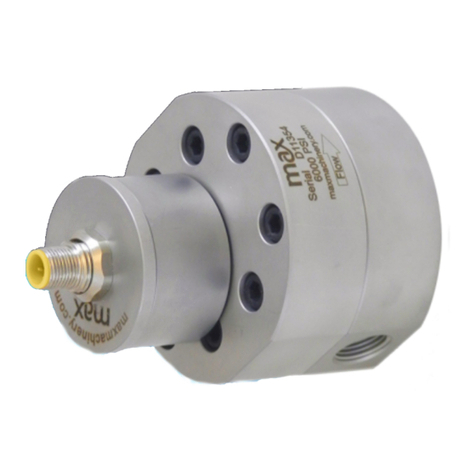
Max Machinery, Inc. 210 Series User Manual © Copyright 2013 Rev. 002Q4 9
DO:
Install bypass plumbing around the ow meter. This is
useful during start up for removing dirt and air from
the plumbing or when measuring uid that may freeze
inside the line and need to be remelted before it can
pass through the meter. It also allows removing the
ow
meter for service without disabling the system.
DO:
Be very careful to keep parts clean during installation
or teardown. A little dirt can look like a truckload
compared to the 10 micron ltration requirement for
series 210 Meters.
DO:
Clean the lter on a regular basis.
DON’T:
Run water or aqueous solutions not approved by Max
through your ow meter because of internal galling.
DON’T:
Steam clean the meter (bypass or remove the meter if
necessary).
DON’T:
Blow down the meter with compressed air or gas
because it may over-speed and damage the meter.
DON’T:
Remove the Transmitter from the ow meter body.
The transmitter is phased to the meter and a
measurement error will result. Re-calibration will be
necessary; see the transmitter interface software
manual.
DON’T:
Disassemble the ow meter. These are precision
devices which require special tools and techniques.
DON’T:
Turn on the pump in a system lled with material that
is solid at room temperature. Wait until the material
is completely melted and use the ow meter bypass
valve during start up.
DON’T:
Apply excessive differential pressure across the ow
meter as it will cause internal failure (see the pressure
drop curves for safe area operation).
DON’T:
Over pressurize the meter. Maximum pressure is either
1,000 PSI (70 bar) 3,000 PSI (210 bar) or 7250 PSI
(500 bar) depending on model purchased.
DON’T:
Exceed the maximum ow rates for the material
viscosity.
DON’T:
Allow materials which solidify in air to set up in the
ow meter. These may be impossible to remove. If
the meter needs to be removed for repair and cannot
be completely cleaned. Plug the inlet and outlet ports
at once.
Do’s & Don’ts






























